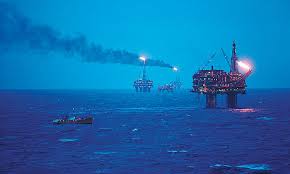
Yesterday the report entitled “UKCS Maximising recovery review: final report” authored by Sir Ian Wood was published.
The report calls for a new regulator to be established separate from the existing DECC (Department of Energy and Climate change) to manage oil and gas assets in the UK Continental Shelf (UKCS).
Some interesting facts from the report:
- The first licences for UKCS the were issued in 1964 and to date the industry has spent £500 billion (in 2012 money) on exploration. Development and production activities. To date HM Treasury has received £310 billion in tax receipts with 42 billion barrels of oil equivalent produced. In 2012-13 the industry paid £6.5 billion in corporate taxes (15% of UK total) and made a £39 billion contribution to the UK balance of payments.
- Production from the UKCS peaked in 1999 at 4.6 million barrels of oil equivalent per day (boepd), and declined at 7% per annum to date. Production has fallen by 500 million boe or 38% during the last 3 years, 360 million barrels are due to a reduction in production efficiency. Production hit a low of 1.6 million boe in 2013.
- Exploration activity during the period 2005-2008 involved 33 exploration wells discovering 1.4 billion boe.
- In contrast to how the UK has spent its enormous North Sea oil wealth over the last 5 decades, Norway set up its sovereign wealth fund, “Government Pension Fund” with a value of $818 billion, the largest in the world using its oil and gas revenues.
- In 2012, the UKCS produced 67% of the UK’s oil requirement and 53% of its gas needs. DECC is projecting that by 2030, the North Sea will still be meeting 70% of the UK’s total energy demands.
- It is estimated that a further 12-24 billion boe can be produced from the UKCS. The average field size in the last 10 years is only 25 million barrels of oil equivalent and 90% of oil fields producing today are producing less than 15,000 boepd.
- Production efficiency has fallen from 80% a decade ago, to 70% in 2010 and is now 60%
- Exploration is at an all time low, with only 150 million barrels discovered in the last 2 years.
Although several larger fields are due to come on stream in the UK in the next few years which will increase production back to levels of 2-3 years ago, many smaller fields are yet to be developed. “However, many of the possible new smaller field developments will only be viable through collaboration to form hubs/clusters to achieve the most efficient and economic development.”, “ a key market and timing consideration is the need to maintain ageing infrastructure and encourage new infrastructure investment, as well as ensuring it is fully utilized through appropriate collaboration”.
So the key is collaboration and sharing of infrastructure. A big example would be Xcite Energy’s Bentley, Statoil Bressay and Cairn’s Kraken developments which are geographically close.
The full report is at:
http://www.woodreview.co.uk/documents/UKCS%20Maximising%20Recovery%20Review%20FINAL%2072pp%20locked.pdf
Contrarian Investor UK
IMPORTANT: The posts I make are in no way meant as investment suggestions or recommendations to any visitors to the site. They are simply my views, personal reflections and analysis on the markets. Anyone who wishes to spread bet or buy stocks should rely on their own due diligence and common sense before placing any spread trade.
by contrarianuk
Collaboration is key for more North Sea Oil and Gas Production according to Sir Ian Wood
Feb 25, 2014 at 6:45 am in Market Commentary by contrarianuk
Yesterday the report entitled “UKCS Maximising recovery review: final report” authored by Sir Ian Wood was published.
The report calls for a new regulator to be established separate from the existing DECC (Department of Energy and Climate change) to manage oil and gas assets in the UK Continental Shelf (UKCS).
Some interesting facts from the report:
Although several larger fields are due to come on stream in the UK in the next few years which will increase production back to levels of 2-3 years ago, many smaller fields are yet to be developed. “However, many of the possible new smaller field developments will only be viable through collaboration to form hubs/clusters to achieve the most efficient and economic development.”, “ a key market and timing consideration is the need to maintain ageing infrastructure and encourage new infrastructure investment, as well as ensuring it is fully utilized through appropriate collaboration”.
So the key is collaboration and sharing of infrastructure. A big example would be Xcite Energy’s Bentley, Statoil Bressay and Cairn’s Kraken developments which are geographically close.
The full report is at:
http://www.woodreview.co.uk/documents/UKCS%20Maximising%20Recovery%20Review%20FINAL%2072pp%20locked.pdf
Contrarian Investor UK
IMPORTANT: The posts I make are in no way meant as investment suggestions or recommendations to any visitors to the site. They are simply my views, personal reflections and analysis on the markets. Anyone who wishes to spread bet or buy stocks should rely on their own due diligence and common sense before placing any spread trade.